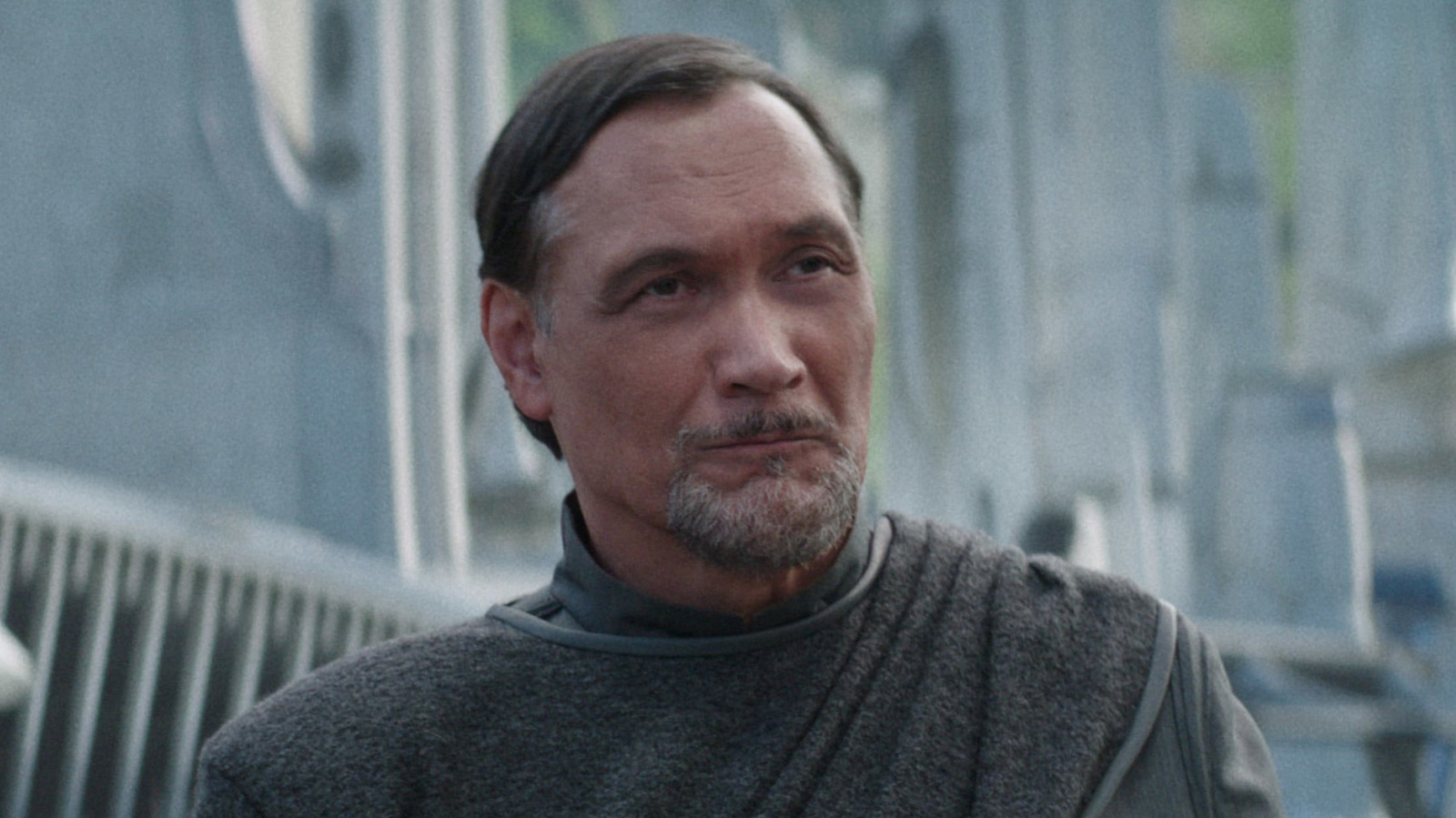
by admin | Apr 30, 2025 | TV & Beyond Articles
George Lucas announced that he’d been in development on more films and would be selling Lucasfilm to Disney. This paved the way for Jimmy Smits to return to the role twice more — once on the big screen in 2016’s “Rogue One: A Star Wars Story,” and again on the 2022 Disney+ series “Obi-Wan Kenobi,” where the show finally explained one of the oldest relationships in all of “Star Wars.”
It would seem, though, that might truly be the end of the line for Jimmy Smits and his run playing the character. As of 2025’s second season of “Andor,” Senator Bail Organa has been recast again.
Advertisement
Jimmy Smits does not appear as Bail Organa in Andor season 2
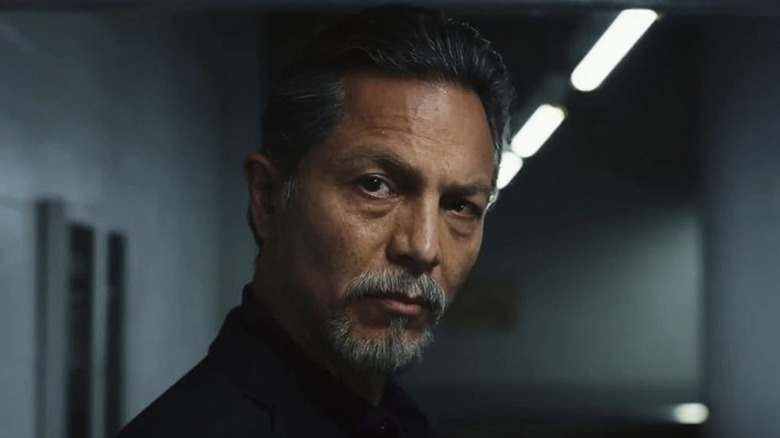
Lucasfilm
A quiet surprise awaited fans watching the second season of “Andor” as we were re-introduced to Senator Bail Organa, but it wasn’t the familiar face of Jimmy Smits who greeted us. Instead, it was Benjamin Bratt. Bratt is probably best known for his roles in “Law and Order,” “Miss Congeniality,” and as the voice of Ernesto De La Cruz in Pixar’s “Coco.” But now he’ll be taking the mantle of “Star Wars” actor and Senator from Alderaan — though exactly how many more stories in live-action there are to tell with Bail Organa is anyone’s guess after “Andor.”
Advertisement
Seeing Bratt in the role was a bit disorienting at first, but the filmmakers behind the show wisely gave us a cameo in an episode first to get audiences used to the change. By his next inevitable appearance (you knew a character this big wasn’t going to be relegated to only one minute of screen time), his mannerisms, voice, and gravitas, coupled with the Alderaanian garb and cape that could belong to no other, convince us wholly that he has fully embodied the role of Bail Organa. It ends up working perfectly, and in a show written as well as “Andor,” it’s hard to fault them for recasting him instead of writing such an important character out of the story entirely when Jimmy Smits wasn’t available for whatever reason (as of this writing, there’s been no reason provided for the switch).
Advertisement
“Andor” season 2 airs new episodes weekly on Disney+.
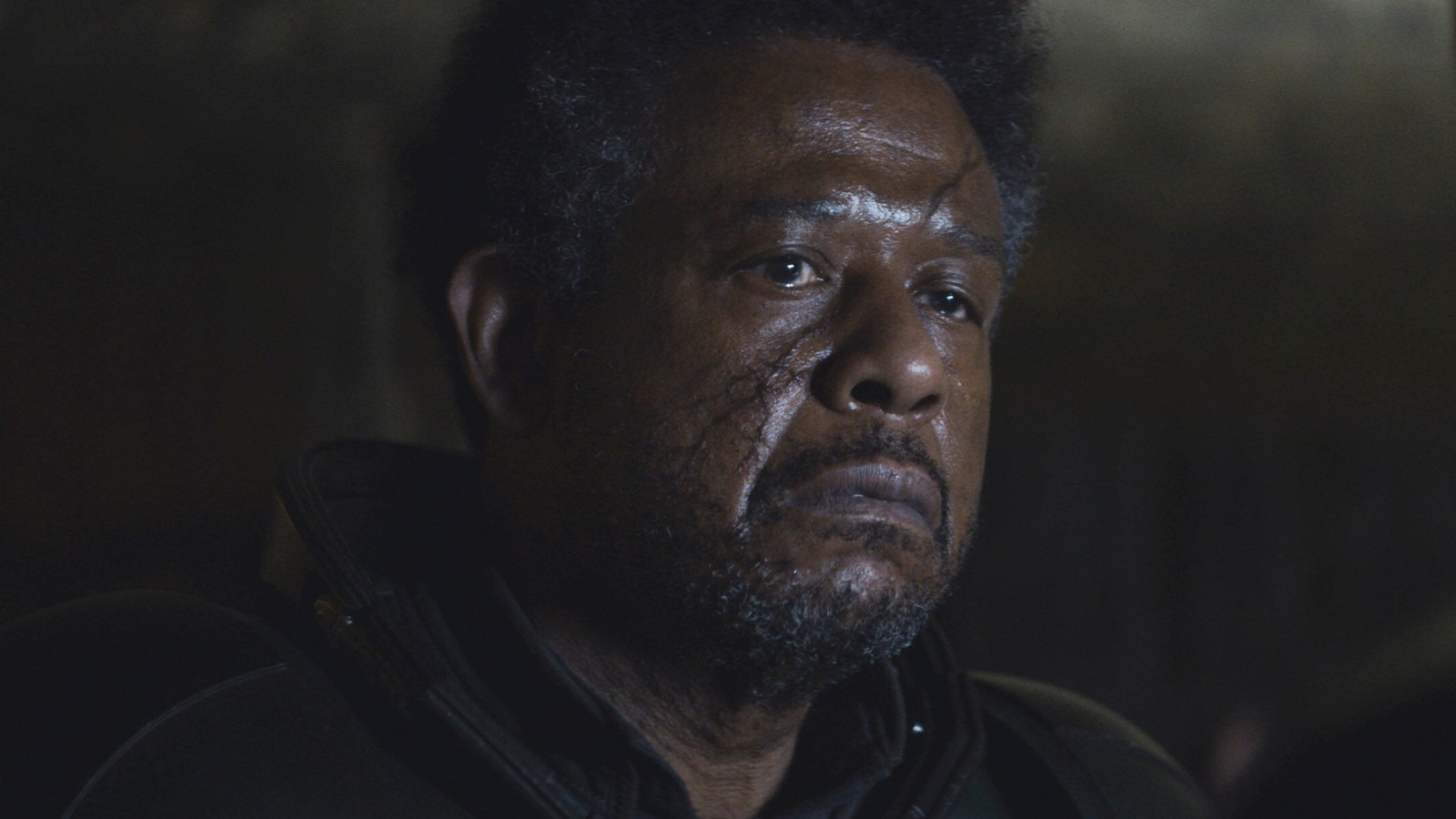
by admin | Apr 30, 2025 | TV & Beyond Articles
The latest season of “Andor” is as (if not more) deliberate and audacious as its predecessor. Episodes 4-6 constitute the second arc of the story, intensifying tensions across the galaxy — from the anxiety-tinged events in Chandrila to the disastrous fate that is yet to befall Ghorman. Episode 5 primarily tackles Cassian Andor’s (Diego Luna) involvement with the budding Ghorman Rebellion, underlining the amateurish unpreparedness of a rebel group that isn’t fully cognizant of the risks that come with the cause. On the flip side, we have Saw Gerrera’s (Forest Whitaker) paranoia-tinged hold over D’Qar, where a trapped Wilmon (Muhannad Bhaier) is reluctantly aiding his schemes. Gerrera delivers a tragic revelation to Wilmon towards the end of the episode, reminiscing about his horrific struggles on Onderon while referring to the starship fuel Rhydonium as his “sister.”
Advertisement
There are dense layers to the statement, as Rhydonium’s explosive constitution is akin to the spark of the rebellion, which, once ignited, can spread like wildfire. But Gerrera’s perception of the rebellion isn’t as patient or measured as Nemik’s manifesto. It is instinctive and passionate, tinged with personal loss and grief, which has rendered him overly cautious of his allies. Rhydonium fumes are toxic, but Gerrera inhales them without fear, as he must have been doing for years. In some ways, the Rhydonium sets him free, fueling the madness necessary for a rebel who must walk on a rather extreme path. It is a grim, heartbreaking scene that showcases the never-ending price rebels must pay to fight for a future they’ll never see.
Advertisement
What exactly is Rhydonium, and have we seen this starship fuel being used in connected “Star Wars” canon? Let’s investigate.
Rhydonium has a long and deadly history in the Star Wars universe
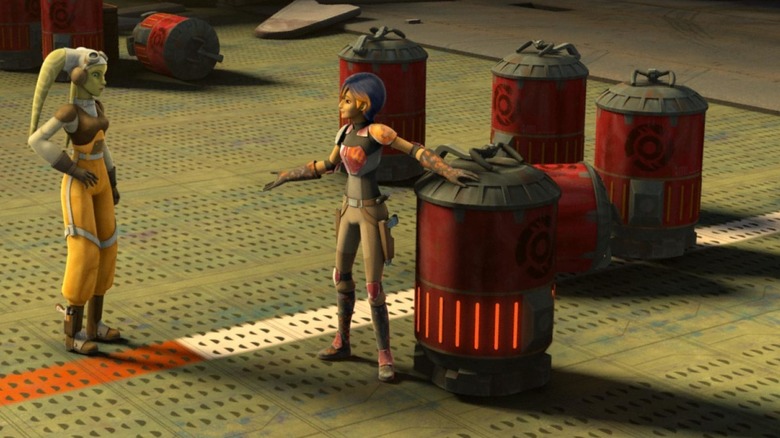
Lucasfilm
Rhydonium is not only highly volatile and combustible, but also pretty risky to salvage, as its fumes are harmful to living beings. The earliest canonical mention of the fuel came in the 2021 comic series “Star Wars: The High Republic Adventures.” As the title suggests, the comic is set in the High Republic Era (231 BBY, to be exact), and it sees the Wyke Town settlement on Loreth exposed to a tragic accident. A semi-sentient species, Greta, attacks the town after its mate is captured by the town founder, but an accidental shot by one of the townsfolk pierces several Rhydonium canisters, causing an explosion. The town founder’s niece, Pela, inadvertently inhales the fumes, causing her mind to break and rendering her mute. Thankfully, this heartbreaking incident ends on a rather wholesome note, as the now-united Greta and its mate heal Pela, completely reversing the effects of Rhydonium.
Advertisement
While the Loreth incident is tinged with miraculous awe, the second major historical use of Rhydonium was in favor of a Separatist plot during the Clone Wars, which eventually backfired — as seen in the animated series “Star Wars: The Clone Wars.” Long story short, the desert planet of Abafar is a precious Rhydonium reserve, but its dwindling resources attract the attention of the Confederacy of Independent Systems (also known as the Separatist Alliance). Their initial plan is to use the fuel reserves to blow up the Galactic Republic space station Valor, but a Republic squad accidentally uncovers the scheme after triggering a Rhydonium explosion to counter Separatist droids. In the end, none other than R2-D2 (!!!) detonates the bomb prematurely and thwarts the Separatist plan to destroy Valor. R2 is blown to bits in the process, but there’s no reason to worry; he was rebuilt from scratch soon after.
Advertisement
Fast-forward 14 years to the events of “Star Wars: Rebels.” In this series, the starship fuel was present in an abandoned Republic base in Fort Anaxes, which had become a smuggling outpost after the Clone Wars. After a group of fyrnocks (creatures indigenous to Anaxes) attack the outpost, Sabine Wren and Hera Syndulla use the depleted Rhydonium reserves to fend off the monsters.
Though Rhydonium’s primary purpose is to fuel starships, these stories show how it can also be used as a weapon, its volatile nature being exploited by various factions.
Rhydonium also makes an appearance at a critical point in The Mandalorian
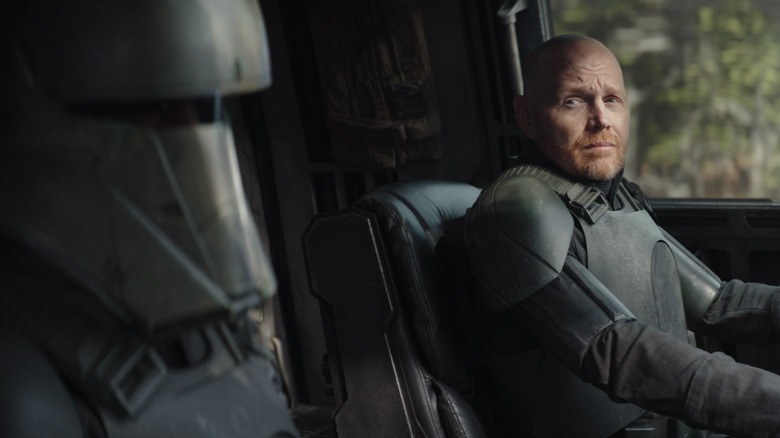
Lucasfilm
In “The Mandalorian” season 2, episode 7, Din (Pedro Pascal) and Mayfeld (Bill Burr) sneak into an imperial facility on Morak by posing as troops transporting a shipment of Rhydonium. The plan goes awry after pirates attack the shipment and try to destroy it, but the duo are able to fend them off and ultimately retrieve the intel they came for. Just before leaving, Mayfeld blows up the Rhydonium, as the fuel was supposed to be used to “create havoc that would make Burnin Konn pale in comparison.”
Advertisement
This declaration underlines the Empire’s eagerness to use natural resources to subjugate pockets of resistance. Rhydonium is more than just a fuel; it is now a means to oppress and frighten. Burnin Konn is a reference to a now-inhabitable planet that had become the target of the Empire’s horrific bombardment campaign, Operation: Cinder.
Rhydonium is also mentioned briefly in “Star Wars: The Force Awakens,” where the fuel is found among starship wreckage on Jakku (which happens to be Rey Skywalker’s home planet). It is safe to infer that the starships that were functional during the Battle of Jakku ran on Rhydonium, which explains why the wreckage is covered in noxious fumes. This obviously made these areas dangerous to traverse, but the fuel’s remnants were still salvageable for those brave (or foolish) enough to retrieve them.
Advertisement
The fuel’s use in “Andor” is both dark and poetic; Gerrera likens it to the insanity of being a rebel and the unbridled freedom that comes with it. It is a symbol of twisted hope for those who are “unloved, hunted, cannon fodder,” even if the path to a brighter future is paved with thankless sacrifices and a million sunless spaces.
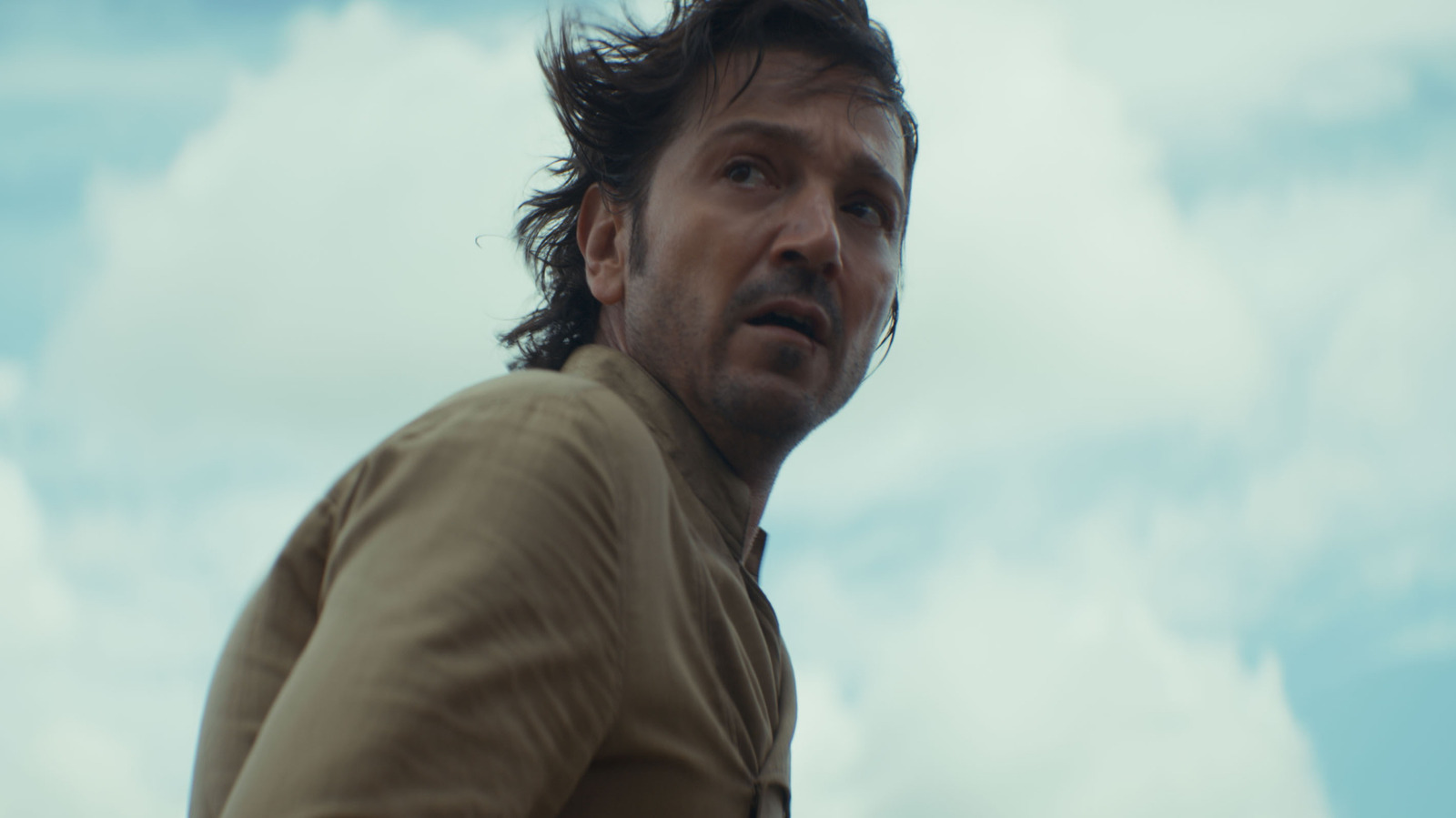
by admin | Apr 30, 2025 | TV & Beyond Articles
“Andor” builds up the horrors of the Galactic Empire like no other part of “Star Wars,” focusing on the atrocities they commit — but not the obvious ones, like blowing up planets. Instead, the show is all about the quieter atrocities, the smaller instances of villainy that slowly made people used to the oppression of the Empire. It’s like Alex Lawther’s Nemik once said, “The pace of oppression outstrips our ability to understand it, and that is the real trick of the Imperial Thought Machine. It’s easier to hide behind 40 atrocities than a single incident.” We don’t need to see stormtroopers annihilating an entire people or Wookiees being enslaved en masse when things like increasing prison sentences for no reason already show the way the Empire oppresses people day-to-day.
Advertisement
Season 2, however, seems to be building up to more explicit atrocities. The first episode of the season already introduced us to the most evil office meeting in recent TV history with Ben Mendelsohn’s Orson Krennic calmly and rationally planning the extermination of an entire planet’s populace right before lunch. That is the Ghorman plotline this season, without a doubt the darkest, timeliest, most poignant plotline in “Star Wars,” and one that fans of “Star Wars Rebels” are familiar with.
In the second batch of “Andor” season 2 episodes, we learn about the Ghorman massacre — and it’s not what you’d expect. Turns out, “Andor” is making Ghorman a pivotal piece of the history of the “Star Wars” galaxy, and to do so, Tony Gilroy and his team are making a huge event from the abandoned Expanded Universe into the ongoing canon.
Advertisement
The Ghorman Massacre is a pivotal moment in Rebel history
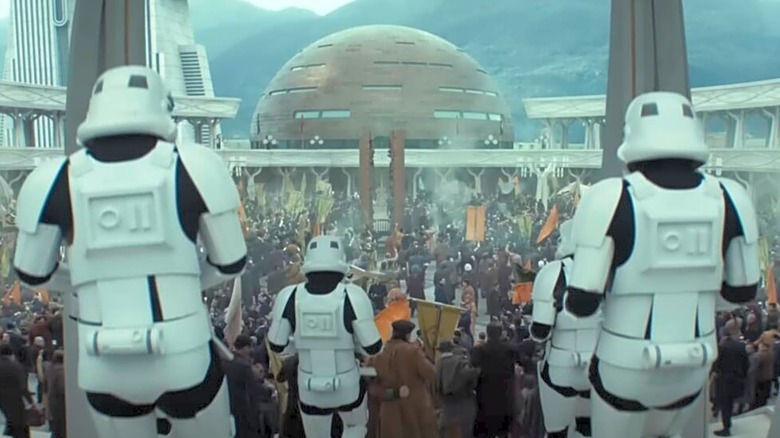
Lucasfilm
In episode 4, we hear about a monument in the middle of the main square in Ghorman’s capital city of Palmo that commemorates a massacre, but it isn’t until episode 5 that we learn of the true lengths of the Empire’s evil. It turns out, 16 years earlier, Grand Moff Tarkin was prevented from landing on the city by peaceful protesters against the Empire. Tarkin being Tarkin, he decided to do away with decorum or decency and landed his starship on top of the Ghormans, killing hundreds.
Advertisement
In the Expanded Universe, now known as Legends, the Ghorman Massacre took place just a few years after the start of the Imperial Era. The event was first introduced in “The Rebel Alliance Sourcebook” for the “Star Wars” roleplaying game in 1990. It’s so important that it directly led to the formation of the Rebel Alliance. In Legends, the former Delegation of 2000 members like Senator Bail Organa and Mon Mothma were inspired by the horrific massacre to begin plotting an open rebellion against the Empire. The massacre on Ghorman became the single biggest encapsulation of the Empire’s cruelty and evil, and the single biggest inspiration to fight against it until the destruction of Princess Leia’s home planet of Alderaan nearly 20 years later.
Advertisement
That Tony Gilroy is incorporating the Legends version of the Ghorman massacre into “Andor” season 2 as well as building up to the version of the events from “Star Wars Rebels” speaks to the brilliant genius of “Andor” and how it connects different sides of “Star Wars” together, seamlessly incorporating canonical events and Legends material.
To quote Nemik’s manifesto, “The day will come when all these skirmishes and battles, these moments of defiance, will have flooded the banks of the Empire’s authority and then there will be one too many. One single thing will break the siege.” That single thing is the Ghorman Massacre, taking place on a planet that has already suffered greatly under the boot of the Empire and will inspire a whole galaxy to rise up and fight evil.
New episodes of “Andor” drop on Tuesday nights on Disney+.
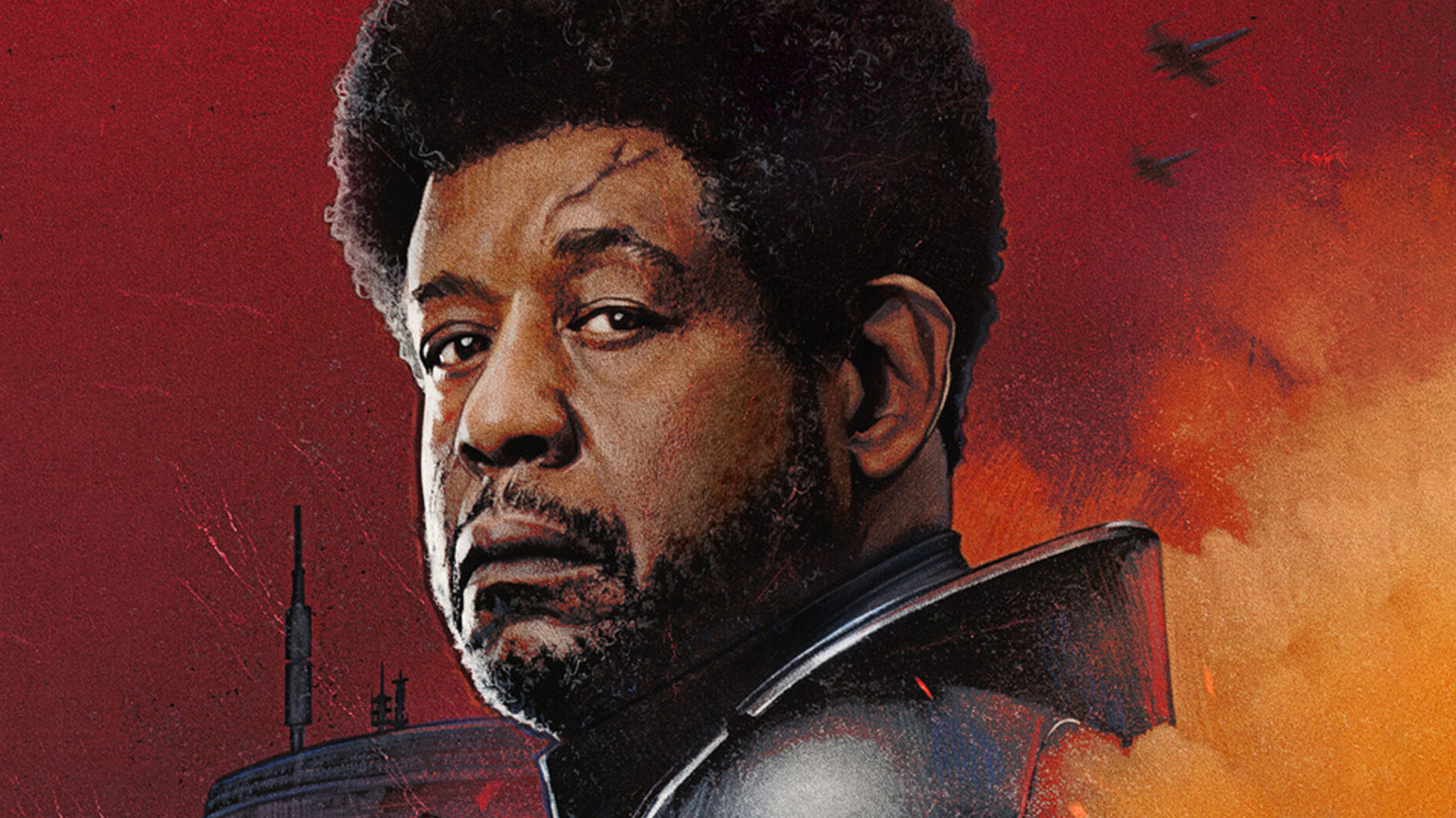
by admin | Apr 30, 2025 | TV & Beyond Articles
as his partisans transition from fighting against the Separatists to fighting the oppression of the Empire from their hiding spots. In the second season of “Andor,” we see some of the rebel elements move to other locations. In the first arc, Cassian Andor (Diego Luna) and his makeshift family—Bix (Adria Arjona), Brasso (Joplin Sibtain), Wilmon (Muhannad Bhaier), and B2EMO have moved to a planet called Mina-Rau. In “Star Wars Rebels” we saw the team establish bases on places like Atollon and Lothal, but with mixed results and always with the Empire close to finding them. They’re always on the move.
Advertisement
Throughout the original “Star Wars” trilogy we saw two secret rebel hideouts: one on the moon of Yavin and the other on the ice world of Hoth. “Andor” season 2, however, reveals that one of the major Resistance bases from the sequel trilogy was also once used by the rebels as well.
D’Qar’s previous appearances in Star Wars
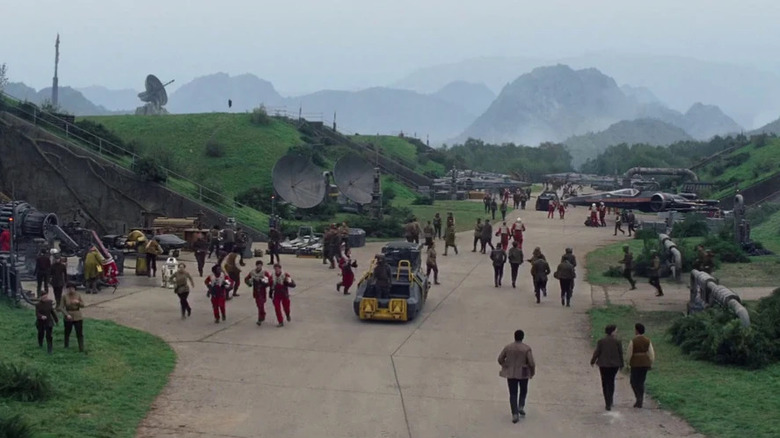
Lucasfilm
The primary base of the Resistance in “Star Wars: The Force Awakens” and the start of “The Last Jedi” is on the planet D’Qar. It’s a former Rebel base — much like Crait and Ajan Kloss, the other bases featured in the Skywalker Saga sequels. We’ve seen D’Qar quite a bit in the sequel trilogy era of the New Republic, in the films, comics and books, but it hasn’t been seen much elsewhere. There were vague mentions of it being scouted by the rebels in the days after the Battle of Yavin and a small outpost was established there by the rebels, but nothing major.
Advertisement
General Leia Organa established it as a base for the Resistance after leaving the New Republic Senate to fight the First Order, as the remnants of the Galactic Empire made their back into power. The base was unique in that most of it was hidden underground and covered with dense foliage, making it difficult to detect the movement of ships and the massive bunkers that served there. Following the destruction of Starkiller Base, they were exposed and had to evacuate D’Qar before they were destroyed. It seemed like those events documented in Rian Johnson’s masterpiece “Star Wars: The Last Jedi” would be the last time we would see D’Qar on the screen — until the most recent arc of “Andor.”
A new look at D’Qar
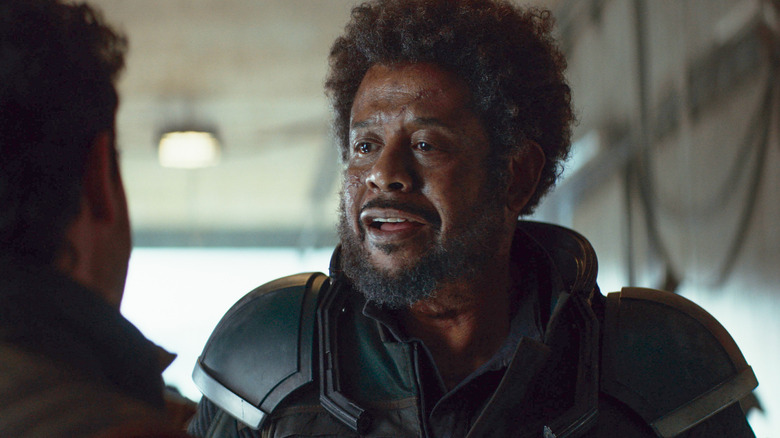
I wasn’t expecting to see D’Qar in the time before the Battle of Yavin because according to the lore, the Rebellion proper hadn’t discovered it yet. But that doesn’t preclude Saw Gerrera and his partisans from having found it, utilizing it, and abandoning it in the days before that momentous victory for the Rebellion. As we catch back up to Saw in this season of “Andor,” he has posted his own band of rebels up on D’Qar and is training them there for chaos, destruction, and every chance they have to fight back against the evil of the Empire.
Advertisement
Since Saw Gerrera is so driven and so paranoid about his place in the galaxy, he isn’t there for very long, but long enough for him to make an impact: stealing rhydonium and striking at the heart of the Empire from the safety of D’Qar. It’s no wonder he didn’t pass the knowledge of the base to other rebels.
It was so great to see such a familiar location back on “Andor,” creating a direct visual tie between the classic trilogy and the sequel trilogy, building a continuity that further ties the entire history of “Star Wars” closer together, and rewarding long time fans with deeper connections.
New episodes of “Andor” release Tuesdays at 9 p.m. ET on Disney+.
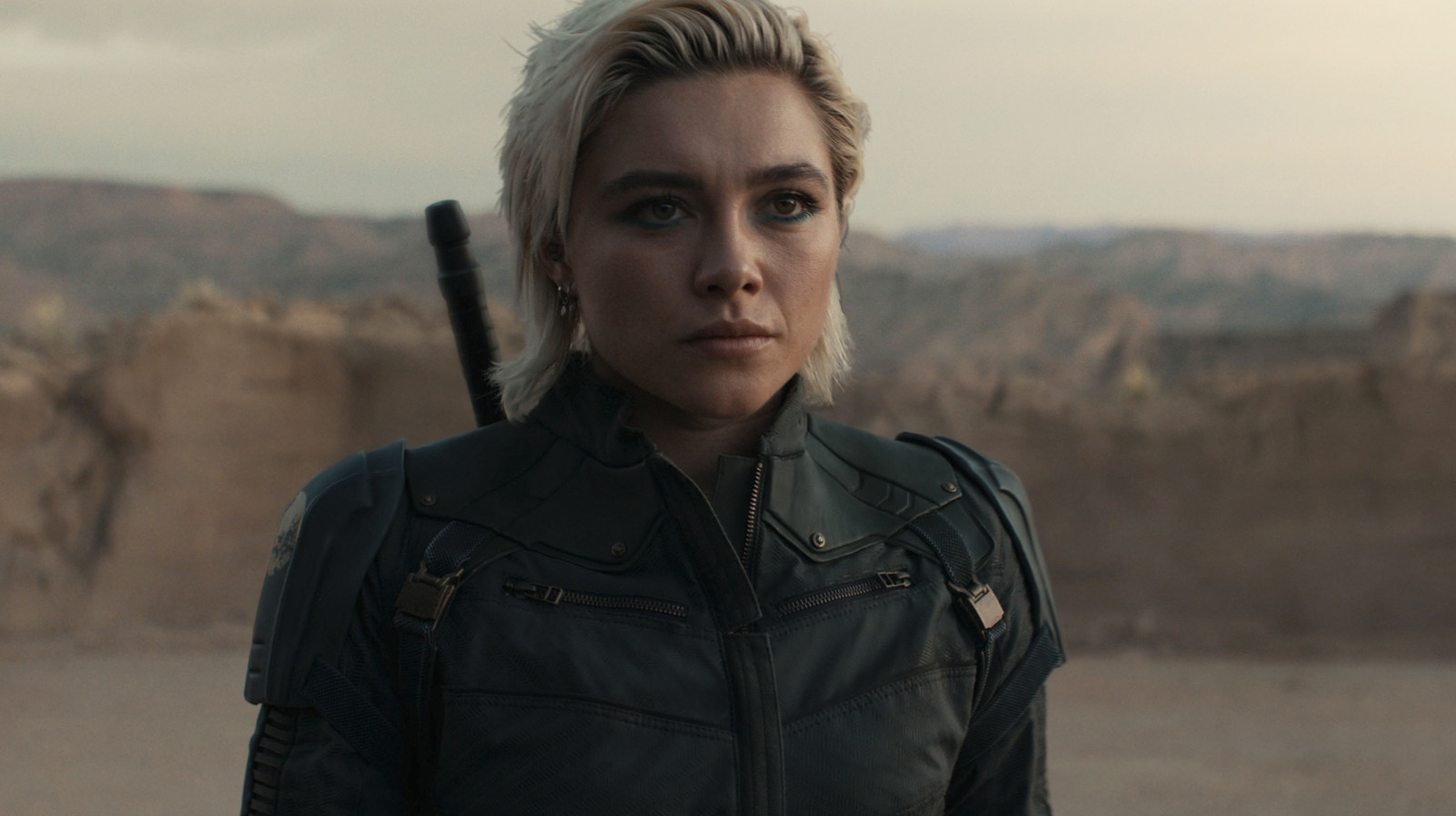
by admin | Apr 29, 2025 | TV & Beyond Articles
“Deadpool & Wolverine” went on to become a massive earner and record breaker. But the biggest surprise to come out of the Marvel Cinematic Universe is “Guardians of the Galaxy” and how its scrappy band of space misfits were able to propel a trilogy of films that still stand among the studio’s best.
Advertisement
Half of the fun of these movies was watching previously obscure Marvel characters get thrust into the spotlight and seeing how they played off one another. The Guardians were the underdogs who had to prove themselves among the studio’s more popular roster of characters. The same challenge now applies to the upcoming “Thunderbolts*,” whose lineup includes a collective of anti-heroes from “The Falcon and the Winter Soldier,” “Black Widow,” and “Ant-Man and the Wasp.” It’s essentially Marvel’s answer to DC’s “Suicide Squad.”
I’m cautiously optimistic about “Thunderbolts*” simply because it has Florence Pugh, David Harbour, Sebastian Stan, and Wyatt Russell at each other’s throats. Early reactions to screenings of the film give the impression that Marvel has a winner on their hands, one that feels like a return to form. As the film encroaches closer and closer to its May 2 release date, it’s interesting to learn that one version of its script supposedly mirrored elements from a beloved Bruce Willis movie.
Advertisement
The original script for Thunderbolts* nearly drew from Die Hard
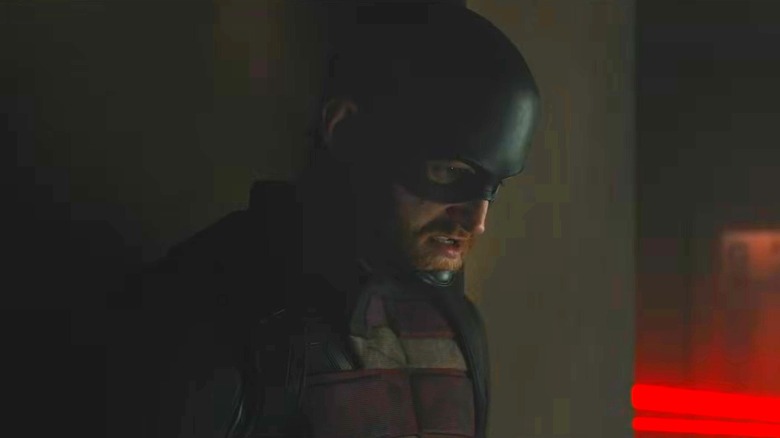
Marvel Studios
You may not immediately associate “Die Hard” with this kind of ensemble movie, but according to “Thunderbolts*” director Jake Schreier, there was a previous version of this film that did (via Games Radar):
Advertisement
“When [screenwriter] Eric Pearson came up with it with Brian Chapek, I think one of the original versions was kind of like a Die Hard thing. Or it was all going to take place in this vault, and getting out of it, which would have been a very cool thing. So I think in the DNA of the film, it was always a little bit more contained.”
While certain plot details are being kept under wraps, the marketing materials indicate that a lot of these characters will be introduced to one another in this vault within the repurposed Avengers tower. It’s now owned by Julia Louis-Dreyfus’ Contessa Valentina Allegra de la Fontaine, so it makes sense that she would use this space — now called the Watchtower — to throw them all together and see what happens. I have to imagine the “Die Hard” element would have had the Watchtower as a character itself, with the anti-heroes having to ascend the building to take out a villain at the top. But that may have ultimately been too close to something like “The Raid: Redemption.”
Advertisement
The issue with making comparisons to “Die Hard” is that the John McTiernan-directed action flick is about the might of one flawed individual overcoming a team of baddies to rescue the woman he loves. I could envision a version of the “Thunderbolts*” where Valentina has hired this crew to stop a character from getting what they want. How much of that initial draft made it into the film? We’ll have to wait another few days to find out.
“Thunderbolts*” is set to hit theaters nationwide on May 2, 2025.
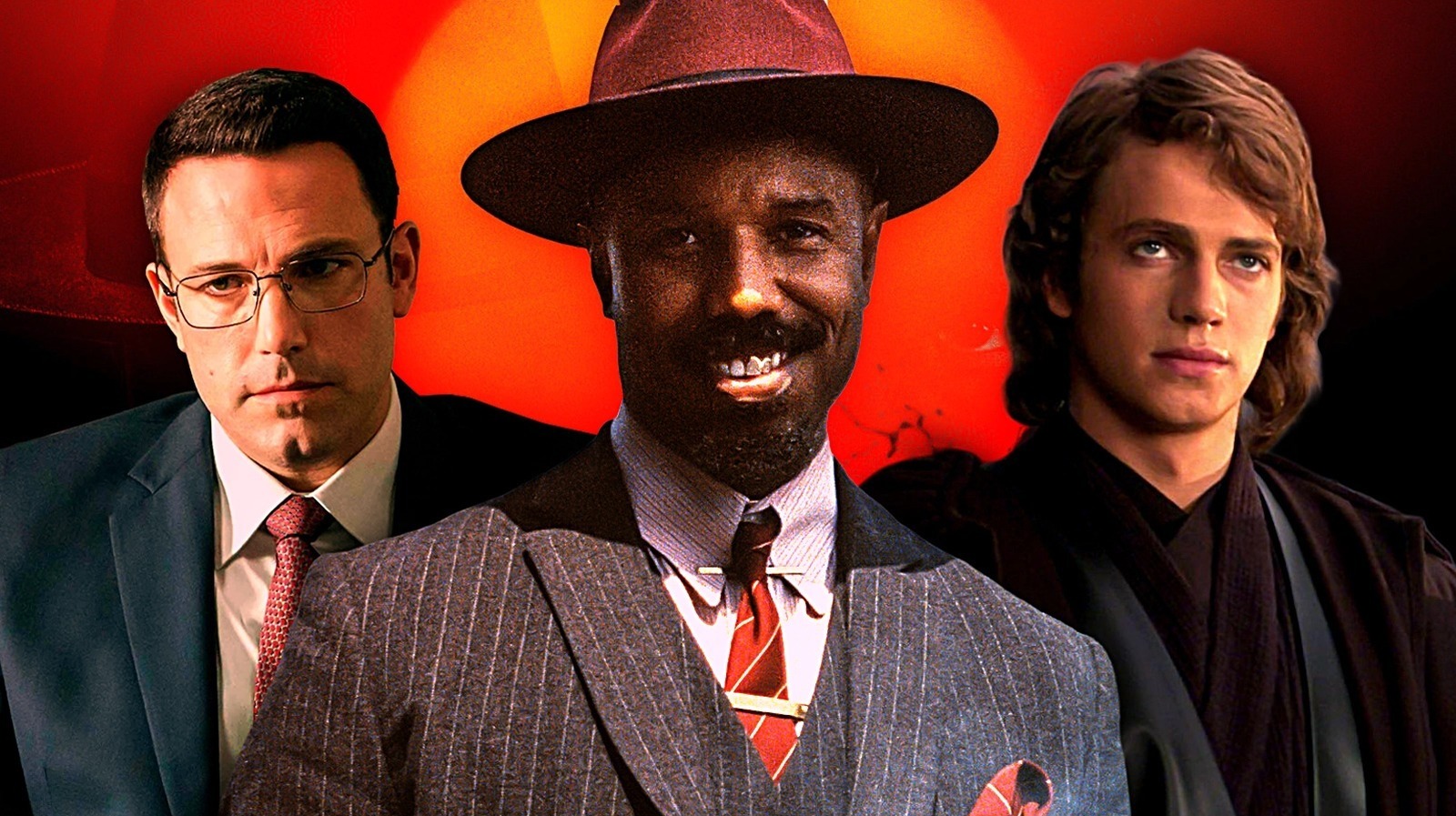
by admin | Apr 29, 2025 | TV & Beyond Articles
box office never fully recovered from the pandemic shutdown five years ago, with some highs along the way but far more lows to complicate matters. Fortunately, things have looked up lately, with “A Minecraft Movie” delivering a global smash. And here’s some more good news: This past weekend was, without a doubt, one of the most important and encouraging weekends at the box office in years.
Advertisement
The last weekend of April 2025 saw Ryan Coogler’s “Sinners” make more than $45 million in its second weekend, a record-low drop for a wide release horror movie. It has now become an unexpectedly huge, original smash hit. What’s special about it, looking beyond the number one movie on the charts, is that Coogler’s latest didn’t completely swallow up the rest of the competition. When “Minecraft” opened to $163 million, the number two movie, “A Working Man,” made just over $7 million. That was far from the case this past weekend.
For starters, “Star Wars: Revenge of the Sith” pulled in more than $25 million, delivering one of the best opening grosses ever for a theatrical re-release. Then we had “The Accountant 2” open to $24.4 million, essentially matching the original’s opening weekend from nine years ago. Meanwhile, “Minecraft” stayed strong, adding another $22.7 million in its fourth weekend, crossing the $800 million mark globally.
Advertisement
All told, four movies made at least $20 million over the weekend. It’s only the second time in the pandemic era that has happened, joining the weekend of June 24, 2022 when “Elvis” ($31 million), “Top Gun: Maverick” ($29 million), “Jurassic World Dominion” ($26 million), and “The Black Phone” ($23 million) all did it.
This is a template Hollywood can (and should) use going forward
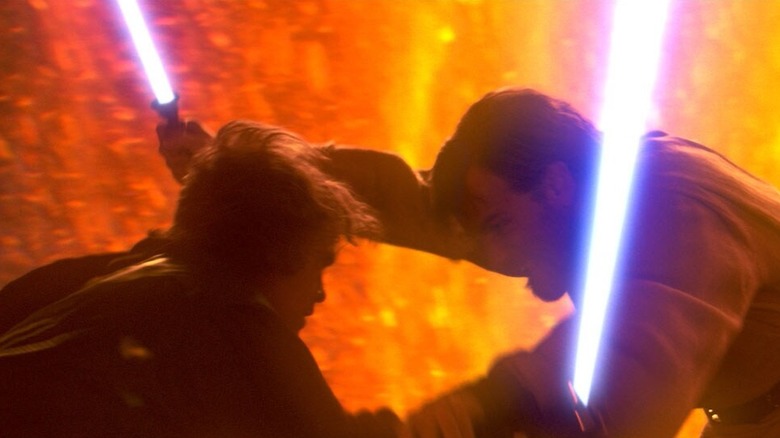
Lucasfilm
One big difference on that weekend in June of 2022 is that, first and foremost, it was in the midst of summer, which tends to be a more robust time for the box office in general. Secondly, only six movies made at least $1 million that weekend, with everything else on the charts settling for six figures. This most recent weekend? Everything in the top ten cleared $1 million, including “Pink Floyd: Live at Pompeii” making $2.6 million on just 678 screens.
Advertisement
Even Sony’s video game adaptation “Until Dawn,” which opened with $8 million at number five on the charts, can be counted as a modest success thanks to its thrifty $15 million budget. Overall, the bigger point is there was a little something for everyone on a non-summer weekend. That’s something we haven’t seen nearly enough of in recent years, with theaters largely left starving to death until the next “Inside Out 2” or “Barbie” comes along.
That’s not a sustainable business model for theaters. A sustainable model looks more like the weekend we’re looking at right now. Let guys like Coogler take gambles that have a chance at paying off. Make big blockbusters for Gen Z like “Minecraft.” Do more big re-releases like “Revenge of the Sith,” particularly since movies like “Interstellar” have also done big business in re-release in recent years. Offer something to different audiences at different budget levels, and don’t spread the release calendar so thin. Counter programming is your friend. People will show up when they are catered to.
Advertisement
A mixed slate week to week is essential for the health of the box office
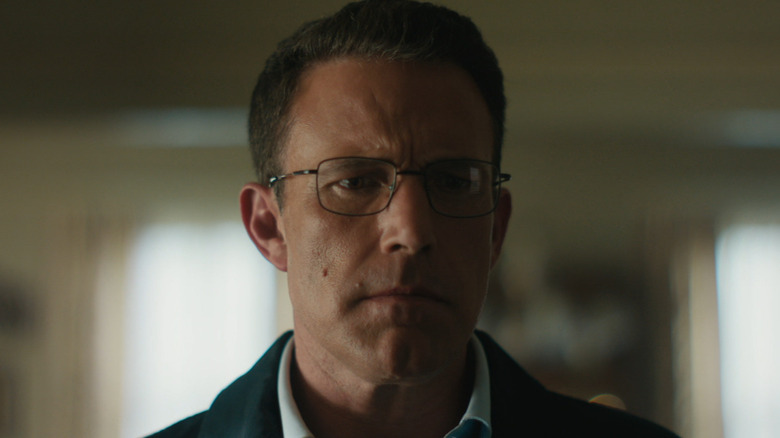
Amazon Studios
If this weekend demonstrated anything, it’s that more movies of varying sizes are needed in the marketplace. Not everything is going to work, but placing too much weight on $200 million blockbusters is a dangerous game. When something like “Snow White” tanks, theaters wind up in trouble and studios are left holding the bag. A varied slate appears to be the key to more sustainable, long-term success.
Advertisement
As we head into a summer movie season with lots of big movies and lots of big gambles on the slate, this feels even more imperative for Hollywood at large to consider. 2025 is set in stone, but 2026 and beyond can still be ironed out. Spread out the release calendar in a more strategic way. Get more mid-budget stuff on screens. Absolutely consider scheduling some more re-releases timed to relevant anniversaries. Put more movies in theaters. It’s the only way to generate more cinematic events that people care about. Volume has to be a bigger part of the equation.
The box office remains on uncertain ground and theater owners are still searching for a viable path forward. In some cases, that involves theaters adding attractions such as bowling and even axe throwing. That’s all well and good, but even those added elements work better when there is a more regular flow of moviegoers as opposed to one big burst of people and then tumbleweeds for weeks on end.
Advertisement
There are going to be bigger weekends at the movies in 2025, but it’s hard to imagine one that more perfectly encapsulates what is still possible. This is what a healthy theatrical marketplace of the future can look like.
We spoke a lot more about the weekend’s box office numbers, as well as some recent movie news items, on today’s episode of the /Film Daily podcast:
You can subscribe to /Film Daily on Apple Podcasts, Overcast, Spotify, or wherever you get your podcasts, and send your feedback, questions, comments, concerns, and mailbag topics to us at bpearson@slashfilm.com. Please leave your name and general geographic location in case we mention your e-mail on the air.















